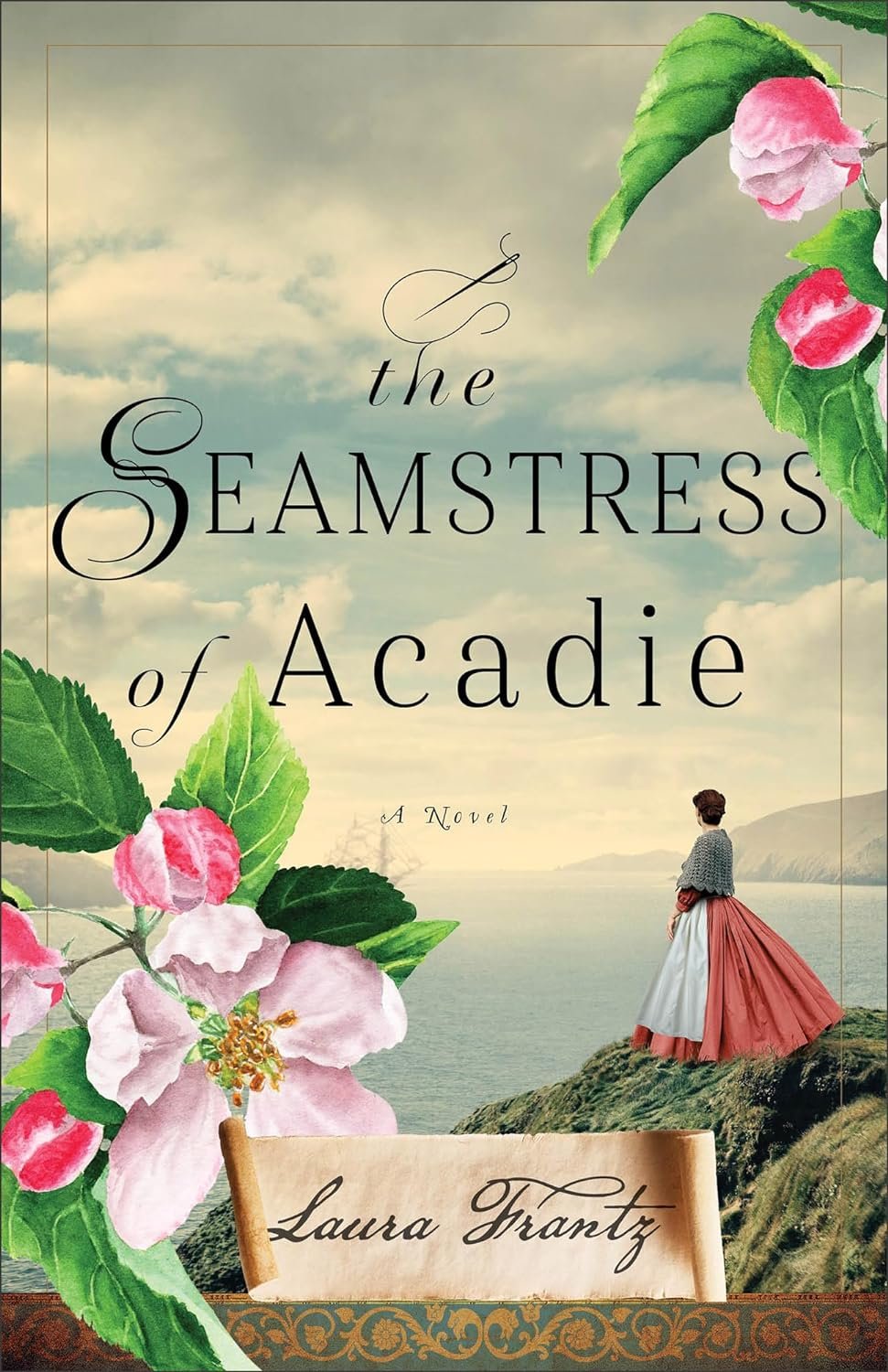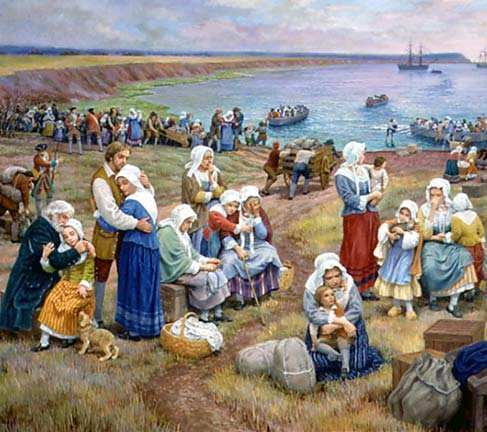Review of 'The Seamstress of Acadie' by Laura Frantz
Review of 'The Seamstress of Acadie' by Laura Frantz
Release date: January 9th, 2024
Publisher: Revell
🍎🍐🍑🍒🥭
Description of Story:
As 1754 is drawing to a close, tensions between the French and the British on Canada's Acadian shore are reaching a fever pitch. Seamstress Sylvie Galant and her family--French-speaking Acadians wishing to remain neutral--are caught in the middle, their land positioned between two forts flying rival flags. Amid preparations for the celebration of Noël, the talk is of unrest, coming war, and William Blackburn, the British Army Ranger raising havoc across North America's borderlands.
As summer takes hold in 1755 and British ships appear on the horizon, Sylvie encounters Blackburn, who warns her of the coming invasion. Rather than participate in the forced removal of the Acadians from their land, he resigns his commission. But that cannot save Sylvie or her kin. Relocated on a ramshackle ship to Virginia, Sylvie struggles to pick up the pieces of her life. When her path crosses once more with William's, they must work through the complex tangle of their shared, shattered past to navigate the present and forge an enduring future.
🍎 🍎 🍎 🍎 🍎
REVIEW
The Seamstress of Acadie is an excellent novel on so many levels. It is a sympathetic and emotional portrayal of a people whose history has been either forgotten or hidden from the rest of the world—except in certain areas such as the Maritime regions of Canada where Acadians first inhabited (and where I am from). They lived in what is today New Brunswick, Nova Scotia, Cape Breton, Prince Edward Island and eastern Quebec. Currently, New Brunswick, the only official bilingual province, contains the largest remnant of Acadians in Canada. The population is one third francophone with 34% speaking both English and French. As a result, the Acadian culture is still very prominent there with a celebration of its food, music, language and festivals. If you venture to the French parts of New Brunswick, you will find it offers quite a pleasant experience. There is a joie de vie (joy of life) among the people that is celebrated fiercely and the enthusiasm is catching! I have enjoyed my visits there where the hospitality is warm and welcoming. These people have managed to preserve their nature loving holiday spirit despite their tumultuous history. This is often seen in their rollicking blue grass, country and western fiddling events.
The French first settled in North America in a territory they called ‘Acadie’ on Saint Croix Island in the early 1600s, a place that sits between Canada and United States on the St Croix River at the mouth of the Bay of Fundy (the divider of the two countries in the area of northeastern Maine and southwestern New Brunswick). The Acadians’ first winter was disastrous with many dying from scurvy. So, Champlain moved the community to a new location across the Bay of Fundy to Port Royal in Nova Scotia. In 1605, this location became the capital of Acadia until 1713 when the British took possession. The Treaty of Utrecht ceded the territory to Great Britain but the Acadians were allowed to keep certain lands. Of course, this was the beginning of much friction and sealed the fate of the Acadians and Mi’kmaq natives. As tensions escalated, the French built two forts: one being Fort Beauséjour. Later on, when asked to sign an oath to Britain: many Acadians refused as they were worried they might be called upon to fight against France. They also did not want to put themselves at risk and become enemies of the Indians. And they did not want to lose their faith/religion.
Laura Frantz’s novel initially focuses on Fort Beauséjour. A strategic site important in Acadie built in 1751 on the isthmus that is part of present day New Brunswick and connects with the province of Nova Scotia. Back then, though, the whole region was called Nova Scotia before it was divided in 1784 and became the two provinces of N.S. and N.B. But in 1755 when the French were defeated by the English, the Fort was taken over and everything changed in the lives of the Acadians.
Laura has done a beautiful job of presenting the conflicts and immersing us in the Acadian culture. Her research has served her well. She has shown us the anguish of a people being torn from the home they loved. With no say, they are loaded up on boats and shipped away. Eleven thousand and five hundred Acadians were forced from their lands, divided from their families, and in some cases— witnessed the burning of their homes. Many lost contact with their loved ones as they were deported and scattered to various British eastern seaboard locations. From New England to Georgia, many were put into forced labour or imprisoned.
When contemplating this horrific event, many of us will think of the romantic words of American poet Henry Wadsworth Longfellow who wrote of the fated lovers separated by the expulsion from their village of Grand Pre, Nova Scotia. Here is a quote from the Prologue of Evangeline: A Tale of Acadie. This poem captured the world’s attention, imagination and heart. And Laura’s novel certainly does the same and reiterates the mood reflected here.
Where is the thatch-roofed village, the home of Acadian farmers,
Men whose lives glided on like rivers that water the woodlands!,
Darkened by shadows of earth, but reflecting an image of heaven?
Waste are those pleasant farms, and the farmers forever departed!
Scattered like dust and leaves, when the mighty blasts of October
Seize them, and whirl them aloft, and sprinkle them far o'er the ocean
Naught but tradition remains of the beautiful village of Grand-Pré.
Painting by Claude Picard. Courtesy Parks Canada/0308010004). THE EXPULSION

